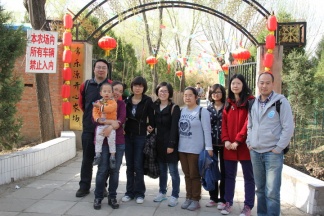Difference between revisions of "Research underconstruction"
From atmoschem
(→Sources of Chinese air pollutants) |
|||
| Line 6: | Line 6: | ||
Publication: Fu et al. (2012) | Publication: Fu et al. (2012) | ||
}} | }} | ||
| − | |||
{{Box|type=l_red_light|text=Constraining the emissions of carbonaceous aerosols in the PRD region}} | {{Box|type=l_red_light|text=Constraining the emissions of carbonaceous aerosols in the PRD region}} | ||
| − | |||
{{HideProject| | {{HideProject| | ||
Publication: | Publication: | ||
}} | }} | ||
| − | |||
| − | |||
{{Box|type=l_red_light|text=Constraints on the historical black carbon emissions from China (1850-2000)}} | {{Box|type=l_red_light|text=Constraints on the historical black carbon emissions from China (1850-2000)}} | ||
{{HideProject| | {{HideProject| | ||
Publication: | Publication: | ||
}} | }} | ||
| + | |||
=Volatile organic compounds (VOCs): global and regional emissions and impacts= | =Volatile organic compounds (VOCs): global and regional emissions and impacts= | ||
Revision as of 09:31, 25 April 2014
Contents
- 1 Sources of Chinese air pollutants
- 2 Volatile organic compounds (VOCs): global and regional emissions and impacts
- 3 Secondary organic aerosols (SOA)
- 4 Chemistry-Climate interactions
- 5 Measurements of Chinese PM2.5 composition
- 6 Air-sea exchange of organic matters
- 7 Long-range transport of pollutants
- 7.1 Accounting for the impacts of the subgrid variability of RH on aerosol optical depth in large-scale models
- 7.2 Mapping volatile organic compound emissions using formaldehyde measurements from satellites
- 7.3 Understanding the sources and production mechanisms of organic aerosols
- 7.4 Constraining the global budget of atmospheric oxygenated organics
- 8 Completed projects
Sources of Chinese air pollutants
Team members: Nan LI, Yue JIAN, Heng TIAN, Hansen CAO, Tzung-May FU
Publication: Fu et al. (2012)
Publication:
Publication:
Volatile organic compounds (VOCs): global and regional emissions and impacts
Team members: Hansen CAO, Heng TIAN
Publication: Fu et al. [2007], Millet et al. [2007], Palmer et al. [2006]
Secondary organic aerosols (SOA)
Team members: Nan LI, Li XING, Tzung-May FU
Publication: Fu et al. (2012)
Publication: Li et al. (2013)
Publication: Xing et al. (2013)
Chemistry-Climate interactions
Team members: Jinxuan CHEN, Yaping MA, Wanying KANG, Aoxing ZHANG
Measurements of Chinese PM2.5 composition
Team members: Wei XU, Jinxuan CHEN, Heng TIAN, Aoxing ZHANG
Air-sea exchange of organic matters
Team members: Cenlin HE, Tzung-May FU
Oxygenated VOCs (OVOCs), including acetone, methanol, etc, are present in high concentrations throughout the atmosphere. Their abundance and distribution have large impacts on the oxidation power of the troposphere, particularly in remote regions.
The budgets of OVOCs are not well understood. One of the major sources of uncertainty is whether the ocean acts as a source or a sink to the atmosphere. The air/sea exchange is complexly regulated by both physical and biological conditions at the interface. We propose a new air/sea transfer module to account for these physical and biological processes, including the presence of microfilms, production/consumption of organic matter by marine life, and other photochemical processes.
Long-range transport of pollutants
Team member: Yue JIAN
Publication: Jian and Fu (2014)

[ Open Urban]
Skin: GoMediaWiki free skin
Accounting for the impacts of the subgrid variability of RH on aerosol optical depth in large-scale models
Team member: Ye QING
Mapping volatile organic compound emissions using formaldehyde measurements from satellites
Volatile organic compounds (VOC) is an important class of atmospheric constituents, impacting the production of ozone, the oxidation power of the atmosphere, the lifetime of other green house gases and pollutants, and the production of organic aerosols.
VOCs are emitted into the atmosphere from both natural and anthropogenic activities, and quantifying these many overlapping sources can be a challenge. We use satellite observations of formaldehyde (HCHO), an oxidation product of many VOCs, to make 'top-down' estimates of VOC emissions from each source.
Publication: Fu et al. [2007], Millet et al. [2007], Palmer et al. [2006]
Team member: Hansen CAO, Heng TIAN
Understanding the sources and production mechanisms of organic aerosols
Secondary organic aerosols (SOA) are the organic mass transferred into the particulate phase in the atmosphere. Many recent observations have found SOA concentrations to be much higher than can be explained by current models in most parts of the atmosphere.
Using a global 3-D atmospheric chemistry model, we investigate the missing source of SOA. In particular, we find that the heteorogeneous uptake of dicarbonyls in aeorsols and clouds can help explained the observed SOA concentrations and variability.
Publication: Fu et al., [2009], Fu et al. [2008], Henze et al. [2008], van Donkelaar et al. [2007]
Team member: Li XING
Constraining the global budget of atmospheric oxygenated organics
Oxygenated VOCs (OVOCs), including acetone, methanol, etc, are present in high concentrations throughout the atmosphere. Their abundance and distribution have large impacts on the oxidation power of the troposphere, particularly in remote regions.
The budgets of OVOCs are not well understood. One of the major sources of uncertainty is whether the ocean acts as a source or a sink to the atmosphere. The air/sea exchange is complexly regulated by both physical and biological conditions at the interface. We propose a new air/sea transfer module to account for these physical and biological processes, including the presence of microfilms, production/consumption of organic matter by marine life, and other photochemical processes.
Team member: Hansen CAO, Cenlin HE